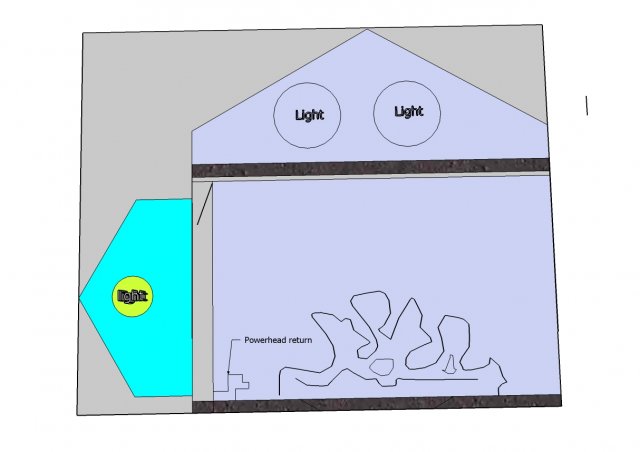Several updates:
1. The algae that does the filtering in the oceans (algae is 90 percent of all life, except for bacteria) is planktonic, meaning they are small particles floating in the water. This is why the ocean is greenish in color. The tiny bit of algae on the beaches is not enough to do any filtering for an entire ocean.
2. Brown-to-Green. Algae on your screen will start off brown, then go to green, after several cleanings. But brown aglae STILL filters; it's just that it's the type of algae that grows when nutrients are high. If your screen never turns green, you are still getting filtering from the brown; it's just that your scrubber is not strong enough to get nutrients low enough to grow green (based on how much you are currently feeding).
3. Real turf algae (the kinds that is tough like carpet) is not needed. Last year I posted that real turf was best, but now it's been shown that in DIY aquarium scrubbers, green hair and even brown slime filters just as well. And that's a good thing because real turf almost never grows because it gets covered up by green and brown (unless you use a surge, which kills the green and brown with lack of flow.)
4. Fish-only tanks don't need tiny particles of food in the water, and thus don't benefit as much from scrubbers. However if you are going to run a skimmerless fish-only tank, and if you are not going to have any mechanical filter at all (like a filter sock), one thing you can do is use very little flow in the display, so that all fish waste will fall to the bottom. Then, make sure you have enough cleanup's on the bottom to break the waste up into tiny particles. The quicker the particles are broken up, the quicker bacteria can convert them into ammonia, nitrate and phosphate, and the quicker the scrubber can absorb these things. However if you are going to have any mechanical filters at all (including a skimmer), then you want high flow along the bottom of the tank so that the particles will get taken away to the filters for removal.
5. T5 bulbs are better, for the same wattage, because all the power is distributed evenly across the screen. CFL bulbs have to be moved further away, because the center spot gets too much power, but the farther spots don't get enough. T5 scrubbers are MUCH harder to build, however.
6. I keep hearing "Yes, skimmers DO remove nitrate and phosphate! They just do it by removing organics BEFORE they break down into nitrates and phosphates". That's just great. Organics, before they "break down", are called FOOD. Yes, FOOD. So yes, skimmers DO remove FOOD (i.e, "protein"). But saying that removing FOOD is the same as removing nitrates and phosphates is like saying removing BEER, before you drink it, is the same as removing the pee after you drink it. Wouldn't you rather have the beer, and then remove the pee? Skimmers remove the food that you put in the tank. Scrubbers remove the "pee" after the tank eats the food.
7. Horizontal (one-sided) screens are only recommended for nano tanks, and only if the screen is narrow (no more than 4 inches wide) so that the water flows like a river. If you try to do horizontal screens on bigger tanks, the screen will have to be wider, and what will happen is that when algae tries to grow thick, it will block the flow from getting past it (it will even block flow to itself). If the screen is 4 inches wide or less, and if the flow is very high, the water will pile up and get over the algae. But on wider screens it won't, and any algae downstream of the thick algae will have it's flow cut off. And for any horizontal screen, make sure you put a solid sheet under it, to keep the water from falling through.
8. Cloudiness is caused by underlying algae layers dying (from not cleaning); if you look at these layers, they look like wheat, and they fall right off of the screen. Green or yellow water, however, is caused by cleaning the screen in the water, without removing it first and taking it to the sink; the strands of algae break and put colored stuff into the water.
9. Algae video:
http://www.youtube.com/watch?v=CB2XlpD-Ld4




